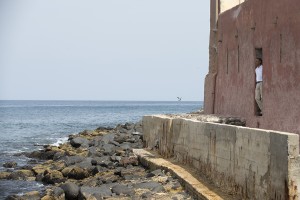Cabot Andy
Nos rapports avec Haïti sont plus délicats, émotifs et rétractiles parce qu’en clair-obscur, ils mettent en jeu les rapports de la France avec elle-même. (Régis Debray and Comité Indépendant de réflexion et de propositions sur les relations Franco-Haitiennes, 2004)
(Our relations with Haiti are delicate, emotional and subjected to mutual discontents because of their shadowy nature, they say something about the relation of France with itself)
In 2004, the publication of an official diplomatic report on French Haitian relations marked a turning point for the two countries. After almost two centuries of near abandon, the French government decided to survey diplomatic relations between the two countries as the Caribbean state celebrated the bicentennial of its independence.
Diplomatic relations between France and Haiti represents a critical aspect in what we could refer to as the “post-colonial world”. In January 1804, after thirteen years of tumultuous conflicts opposing it to France, the colony called Saint-Domingue became the Republic of Haiti. What started as an isolated slave revolt in 1791 against planters in the Northern Province of Haiti became a national war of liberation. Though this rather quick summary might provide a good overview of the situation, the historical fate of the newly founded Haitian Republic was everything but simple.
Indeed, Haiti’s independence was won primarily by the blood and sacrifice of former ”Bossales”—slaves recently deported from their home societies who had no blood relations in the colonies—a mass of gang labor slaves that defeated Napoleon’s brother in law Charles-Victor Leclerc and his troops, which was then the strongest military force in the world.
In the aftermath of its defeat, France devoted sustained international efforts to silence and suppress the consequences of this colonial disaster. In 1825, French King Charles X and Haitian President Jean Pierre Boyer agreed that Haiti should pay reparation amounts to French planters who had fled during the Revolution. By 1914, as the Haitian state credit interests to French banks rose to extreme proportions, the country was concentrating almost 80 percent of its national wealth to repair its debt to France. Even today, there might still be interest payments due that had been frozen by the French government (Laurent Dubois, Aftershocks, 2012, 7-8)
In the early 21th century, relations were still very precarious. As the 2004 report indicates, while two American presidents chose to visit Haiti during the 20th century, no French president or high official bothered to set foot on the island. Still, regardless of this ideological denial by France and other Western countries, the former colonial power managed to maintain strong connections with Haiti and its other colonies throughout the years. In the Haitian case, the fact that the French language was still being spoken by the great majority of the elites—as well as the growing presence of Haitian migrants in French-speaking areas—offered possibilities for a diplomatic rapprochement. In many ways, this twofold factor (language-migrations) also characterized the destiny of many African countries that achieved their independence from France in the 20th century. Still, this rather “bright” picture of a possible new future between an imperial power and its former colonies leaves us with an idyllic contemplation of the problems facing what has now come to be understood as the “Francophone” world.
In 2013, the French rapper Kery James expressed these hardening concerns in most blatant terms. The new title track of his recently released compilation “Lettre à La République” provoked outstanding reactions from public figures in the French media. The song was violently dismissed and degraded for being a model of anti-Frenchness, an insult to the nation, and almost an act of betrayal. In effect, James’s song is not moderate in any sense towards the national sentiment in France. Castigated as a remnant of colonial domination and inherent national racism, the words “France” and “Republic” are successively portrayed as engines of destruction, cultural mechanisms of superiority primarily directed at submitting French migrant population to a colonial continuum. At the height of his suffocating prose, James declares “Mon respect s’fait violer au pays dit des Droits de l’Homme. Difficile de se sentir Français sans le syndrome de Stockholm” (My respect got raped in the country of the Rights of Man. Its hard to fee French without the Stockholm Syndrome).
At first glance, one could be tempted to see these words as emanating from pure hatred and resentment. After all, a consequent segment of the French rap industry tends to produce short-minded lyrics about what is often perceived as the country’s colonial legacy. James is not this kind. Indeed, his letter opens us a diverse series of interrogations on the past, present and future of relations between France’s ex-colonial “subjects” and the former “métropole”. To some extent, his song epitomizes in a highly polemical but also poetical manner the unresolved issues of French imperial history brought back from the past by migrants from ex-colonies residing in France. In the same vein, this song is also primarily addressed to these populations. It conveys the sense that a different set of relations between these migrants and the Republic has recently emerged—one that contradicts the basic pattern of the French tradition of national assimilation.
As a resurgence from military and administrative practices in the different French colonies, the idea of national assimilation took shape in the “métropole” by the late 19th century. In order to compel the first waves of non-French migrants to follow the rule of the Republic, the theory of assimilation dominated the country’s relation to migrants without any serious alternative until the late 1980s. To put it simply, it advanced that if one wished to become a citizen of the French Republic, he had to categorically abandon all traces of his home culture to prove his willingness to learn and assimilate the superior codes of French culture. As essentially a state-controlled ideological force, national assimilation turned out to become an extremely tense subject by the late 1980s when large group of migrants from North, sub-Saharan Africa and Southeastern Asia started to flood the métropole in the aftermath of decolonization. By the late 20th century, assimilation was presented by representatives from the entire political spectrum as in a state of crisis while migrant populations – through the use of popular genres of music like rap – started to voice their concerns about the place of their cultural identities in contemporary French society.
It is only throughout these recent debates that James song puts on meaning. On many occasion, the rapper does not hesitate in drawing a parallel between migrants from North Africa and sub-Saharan Africa. As he says as a run-through during the song:
La République n’est innocente que dans vos songes. Et vous n’avez les mains blanches que de vos mensonges. Nous les Arabes et les Noirs on est pas là par hasard. Toute arrivée à son départ.
(The Republic is only innocent in your dreams. Your hands are filled with white lies. Us, Arabs and Blacks are not there by accident. All arrivals have their origins)
Interestingly, the words used are contemplating different levels of the French colonial and post-colonial realities. When he refers to “us”, James immediately assembles “Arabs” and “Blacks” in a single community. To some regards, this kind of counter-assimilation is very surprising at an historical level while being more sensible in terms of the present-day social conditions of migrants in France.
When the first wave of migrants from France ex-African colonies massively disembarked in the “métropole” by the late 1960s as cheap labor force for boosting the domestic economy, the rather separated entities of the French Empire in Africa (the North African regions were composed of the three Algerian departments, the protectorates of Morocco and Tunisia while the Sub-Saharan colonies stretching from Guinea to Cameroon were separated between the AEF and AOF) were forced together in the same urban and social environment. As poverty and weaker social aids started touching those areas in the outskirts of Paris by the late 1980s, the second and third generation of “Arabs” and “Blacks” tended to develop a shared sentiment of ostracism and abandonment.
James’ childhood experience in France relates directly to this historical background. Born in 1977 in Guadeloupe, James’s parents chose to move to France in the mid-1980s. His parents were both Haitians and James apparently chose never to return to Haiti even during his adult life. As he experienced distance and displacement from his native land, he started recording at a very early age with different musical acts. In one of his iconic early track “28 décembre 1977”, the then coming-of-age James powerfully demonstrated the meaning of what he saw as another form of forced migration inflicted to peoples of African descent « D’une famille plus proche d’êtres pauvre que fortune 28 décembre 77, aux Abymes j’suis né Et a une date que j’ignore un jour je partirai… » (From a poor family rather than a rich, December 28 1977 in the Abyme I was born, and at an unknown date I will leave) before insisting on the dreadful social conditions his family had to put through in France. “J’ai grandi à Orly dans les favelas de France. J’ai “fleury” dnas les maquis j’suis en guerre depuis mon enfance” (I grew up in Orly in the French favelas. I came to age in the guerilla fields, I’ve been at war since my childhood). All in all, as he relates his own experience to those of African migrants, the artist here succeeds in bringing together a continent into a unique historical condition of imperial sufferings and domination.
Twelve years after this song was recorded, James’ letter still resonates to this original separation from his home country while it meddles with his call against the ideological pressure of assimilation:
Ici, on est mieux que là-bas on le sait. Parce que décoloniser pour vous c’est déstabiliser. Et plus j’observe l’histoire beh moins je me sens redevable. Je sais ce que c’est d’être Noir depuis l’époque du cartable
(Here we are better than there. Because for you to decolonize is to destabilizeThe more I contemplate your history the less I feel proud of it. I know what it means to be black since playground times)
In a broader sense, it is extremely striking to see the effectiveness of James words if one knows a bit about the common sentiments of African migrants in France. On the one hand, it is interesting, though not surprising, to hear such radical and deeply-researched prose from James. As mentioned above, the feeling of resentment against assimilation is a common theme that runs throughout many popular rap songs in France. Nevertheless, James’ song is one of the few that successfully manages to tackle the core problem that is still at stake in debates around the French colonial past: that of the relational condition of two different versions of France since the beginning of the colonial experiment in the early 17th century. Coming from a family born in Haiti, brought up in Guadeloupe in his early childhood before being thrown into the African suburbs of Paris, James had experienced the relationship between the colonial and colonized France in many different ways when he started his musical career.
His “Letter to the Republic” acts as a highly symbolic gesture for the present day condition of migrants in France while being also closely related to a sound and significant lyrical inquiry of French imperialism. Though a bit flawed and tangling in some occasions –as when James gathers “Arabs” and “Blacks” within a supra-ethnic category of imperial sufferers- it is through the deeper roots of the artist one can find the most profound challenge contained in the letter.
As a distant son of Haiti, James does remind us of the still pervading difficulties for solving the unresolved matters of the French colonial past. Almost two centuries after the death of Haitian independence hero Toussaint Louverture, the French remains of colonial prejudice tend to portray James in the same manner as Toussaint: a hybrid other, a talented man but also a sulfurous agitator. These realities still formed a highly complex set of ideological interests. When James calls France to its historical responsibility when he repeats, “Every arrival has an origin”, the 2004 report on responds « Would we be able to seize this occasion to remember our slaveholding past and get rid of the weight that servitude imposes to the masters? »Puissions-nous saisir l’occasion de nous rappeler que nous fûmes desesclavagistes, et nous débarrasser du poids que la servitude impose auxmaîtres. »
All in all, despite all the difficulties facing France in its relations with its ex-colonies, the former “métropole” and “colonies” seem to have entered enter a new era of diplomatic relations by the early 21st century. Nevertheless, as James’ words seem to remind us, questions still remain unanswered as history’s shadows continue to weigh down on these two entities: the two versions of France.
Sources:
Laurent Dubois, Haiti: The Aftershocks of History, Metropolitan Books, 2012.
Régis Debray and Comité Indépendant de réflexion et de propositions sur les relations Franco-Haitiennes, Rapport au Ministrèe des Affaires Etrangères, M. Dominique de Villepin, January 2004. Available : [Accessed 11 March 2014].




